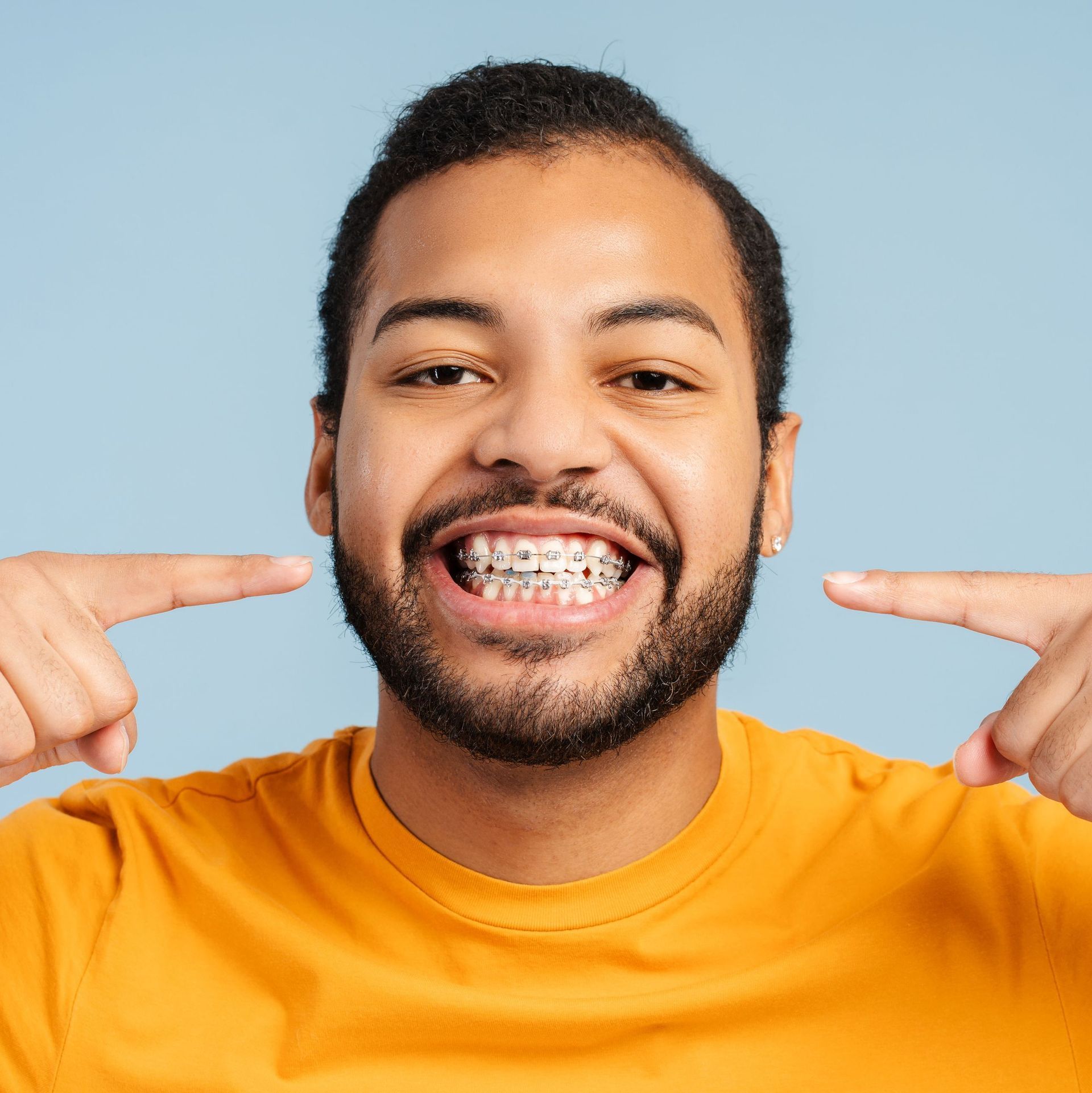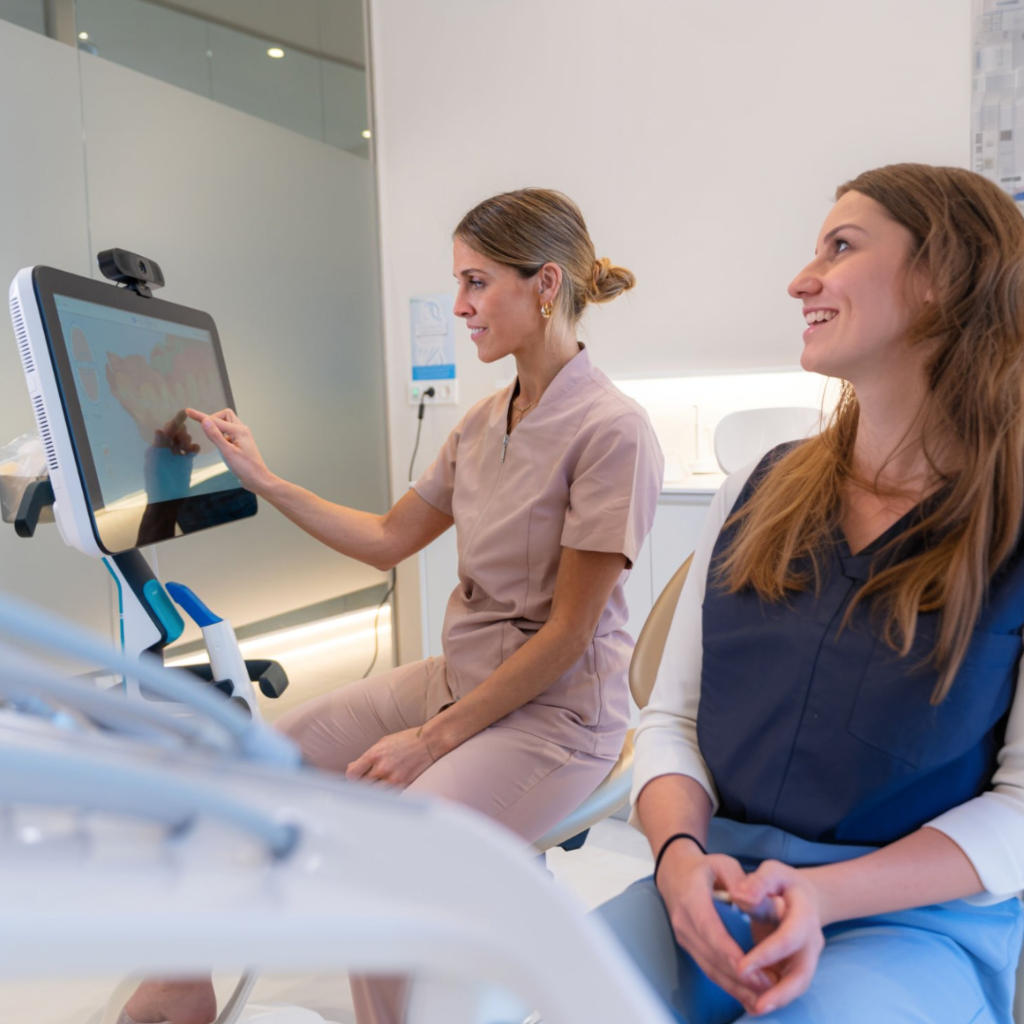Dailey Ortho's Guide to Brushing and Flossing with Braces

Keep Cavities Away and Your Smile Bright with the Right Oral Care Routine
Table of Contents
Introduction
Why Oral Hygiene Is Extra Important with Braces
Understanding the Challenges Braces Present
Brushing with Braces: The Complete Guide
Best Toothbrushes for Braces: What to Use and Why
Flossing with Braces: Yes, You Really Can Do It
Using Mouthwash for Extra Protection
Should You Use a Tongue Scraper with Braces?
Oral Care Tips for Invisalign® Users
Common Mistakes to Avoid When Cleaning Braces
How Dailey Ortho Supports Your Smile Care
Why Choose Dailey Ortho in Virginia
Conclusion
Frequently Asked Questions (FAQ)
Introduction
Braces do more than straighten teeth—they also make brushing and flossing a whole new adventure. If you've recently started your journey with braces or
aligners at Dailey Ortho, you might be wondering,
"How do I keep my smile healthy during treatment?"
The answer:
with the right tools, the right habits, and a little help from your orthodontic team.
Dr. Curtis Dailey, Virginia Peninsula's premier
Invisalign® provider, has helped thousands of patients across
Hampton,
Poquoson, and
Newport News master their oral care routines while wearing braces. From brushing techniques to flossing hacks, this guide is your one-stop resource for preventing cavities and maintaining a radiant smile.
Because when it comes to your orthodontic journey, Dailey Ortho wants to make sure you're not just straighter—you're healthier, too.
Why Oral Hygiene Is Extra Important with Braces
Let's face it: braces add more nooks and crannies for food and plaque to hide. Without a solid cleaning routine, these hidden spots can become breeding grounds for bacteria, leading to:
- Cavities
- Gum inflammation (gingivitis)
- Decalcification (white spots)
- Bad breath
Orthodontic treatment already takes time and dedication—why let poor hygiene set you back?
That's why Dailey Ortho emphasizes proactive care from the very beginning. With braces or aligners, oral hygiene needs to go from casual to committed. A few extra minutes each day can make the difference between a flawless finish and preventable damage.
The good news? With the right tools and routine, maintaining a clean mouth with braces doesn't have to be difficult. It can become second nature.
Understanding the Challenges Braces Present
Braces do a lot of good, but they also make brushing and flossing trickier. Traditional braces consist of brackets, wires, and rubber bands, which create small crevices that can trap food and plaque. Even clear aligners, while removable, require special care for both your mouth and the aligners themselves.
Here's what you're up against:
- Food particles get stuck around brackets and under wires.
- Plaque builds up if not removed regularly, especially behind brackets.
- Gum sensitivity or bleeding can occur if brushing is inconsistent.
- Increased risk of tooth stains around braces if you don't clean properly.
This doesn't mean you need to brush 10 times a day—but it does mean your oral care routine needs to be smarter and more thorough. That's where expert guidance from Dr. Dailey and our team comes in.
At Dailey Ortho, we teach you exactly how to clean your teeth during every phase of your treatment—because a clean smile is a confident smile.
Brushing with Braces: The Complete Guide
Do you think brushing your teeth twice a day is enough? When you have braces, that rule gets a serious upgrade. With braces, brushing three to four times a day—especially after meals—is ideal to keep bacteria at bay.
Step-by-Step Brushing Routine:
- Rinse your mouth with water to loosen food particles.
- Use a soft-bristled toothbrush or orthodontic brush.
- Angle your brush 45 degrees toward the gum line.
- Brush above and below the brackets, not just on the surfaces.
- Spend at least 2 minutes brushing.
- Finish with a rinse or fluoride mouthwash.
Pro Tip:
Use a proxabrush (also known as a "Christmas tree brush") to clean between brackets and under the wire—it's a game-changer for tough-to-reach spots. Dr. Dailey recommends using a mirror while brushing to ensure you cover all angles.
Best Toothbrushes for Braces: What to Use and Why
Not all toothbrushes are created equal, especially when you're working around braces. Using the right toothbrush can help remove plaque more effectively and protect your gums from irritation.
Top Brush Options for Braces:
- Electric Toothbrushes:
These do the heavy lifting for you. Look for orthodontic-friendly heads with soft bristles.
- Orthodontic Manual Brushes:
Designed with a V-shaped bristle pattern to clean around brackets.
- Interdental Brushes:
Small, tapered brushes that clean under wires and between teeth.
- Travel Brushes:
Compact and ideal for maintaining your routine on the go.
Whatever brush you choose, the goal is the same: gentle yet thorough cleaning. Brushing too hard can damage your gums and wear down enamel. Let the brush do the work—make sure it's reaching all the right places.
Flossing with Braces: Yes, You Really Can Do It
Flossing with braces might feel like trying to thread a needle in the dark—but it's absolutely essential. When you skip flossing, plaque builds up between teeth where your brush can't reach, leading to decay and gum inflammation.
Your Flossing Options:
Orthodontic Floss Threaders
- A flexible plastic loop that helps guide traditional floss behind the wires.
- Inexpensive and available at most drugstores.
- Best for thorough, manual flossing once per day.
Pre-threaded Floss Picks (Orthodontic)
- These are great for busy mornings or flossing on the go.
- Designed with thinner ends to slide easily behind wires.
Water Flossers (e.g., Waterpik)
- A favorite at Dailey Ortho, especially for kids and teens.
- Uses a high-powered stream of water to clean between teeth and along the gum line.
- Gentle and effective with minimal effort.
Interdental Brushes
- Although not technically floss, these tiny brushes help clean tight spaces where floss cannot reach.
Regardless of the method you choose, the key is consistency. Floss at least once daily—preferably at night—to keep your smile healthy and your braces working efficiently.
Using Mouthwash for Extra Protection
Brushing and flossing are your A-team, but mouthwash is the secret weapon. A good fluoride or antibacterial mouth rinse can reach places your brush and floss miss—especially around brackets and gum lines.
Why Mouthwash Matters with Braces:
- Fights bacteria that lead to plaque, decay, and bad breath.
- Reduces inflammation around sensitive gum areas.
- Strengthens enamel with fluoride protection.
- Speeds healing of minor cuts from brackets or wires.
Dr. Dailey's Tips:
- Choose an alcohol-free mouthwash to prevent your mouth from drying out.
- Use it twice daily, especially after brushing and flossing.
- Swish for at least 30 seconds to allow ingredients to work effectively.
- For optimal results, avoid eating or drinking for 30 minutes afterward.
Need help picking the right rinse? Ask at your next appointment—we're happy to recommend one based on your needs.
Should You Use a Tongue Scraper with Braces?
You might think your braces are the only thing needing attention, but your tongue plays a big role in oral health, too. A tongue scraper is a simple yet often overlooked tool that can elevate your hygiene routine to the next level.
Benefits of Using a Tongue Scraper:
- Reduces bacteria that cause bad breath.
- Removes debris that brushing may miss.
- Improves taste by clearing gunk off your taste buds.
- Supports total-mouth cleanliness—essential when wearing braces.
Using a tongue scraper once a day (usually in the morning) is enough. Gently glide the scraper from the back of your tongue forward, rinse it off, and repeat 2–3 times. It takes less than 30 seconds and can make a huge difference in how fresh your mouth feels.
Pro Tip: Pair your tongue scraper with your morning mouthwash routine for a double-clean effect.
Oral Care Tips for Invisalign® Users
If you're wearing Invisalign®, your oral care routine is a bit easier—but no less important. Since the aligners are removable, you don't have to work around wires or brackets, but keeping both your teeth and aligners clean is crucial.
Daily Invisalign® Hygiene Tips:
- Brush after every meal before reinserting your aligners.
- Rinse aligners thoroughly before reinserting.
- Soak aligners daily in Invisalign cleaning crystals or retainer cleanser.
- Avoid using hot water—it can cause the plastic to warp.
- Use a soft toothbrush to gently clean your aligners, avoiding scratches.
Keeping your aligners clean not only maintains your oral health, but it also keeps them clear and nearly invisible. Dirty aligners can get cloudy, smelly, and even cause gum irritation.
Common Mistakes to Avoid When Cleaning Braces
Even the most well-meaning patients can occasionally slip up. Here are some of the most common oral hygiene mistakes we see at Dailey Ortho—and how you can steer clear of them:
Mistake #1: Brushing too hard
Excess pressure can cause gum irritation and even wear away enamel. Use a soft-bristled brush and gentle strokes.
Mistake #2: Skipping floss
Flossing is just as important as brushing. Don't let the hassle of braces stop you—there are tools to make it easier.
Mistake #3: Not brushing after meals
Food can get trapped in your brackets quickly. Waiting until the end of the day lets plaque fester.
Mistake #4: Forgetting the gum line
A lot of plaque builds up near the gum line. Tilt your brush and clean just under the edge of your gums every time you brush.
Mistake #5: Not replacing your toothbrush
Worn-out bristles can't clean effectively—replace your brush every 3 months or sooner if it looks frayed.
Avoiding these mistakes and following your care plan will keep your teeth in top shape throughout your orthodontic journey.
How Dailey Ortho Supports Your Smile Care
At Dailey Ortho, we don't just straighten smiles—we help you maintain them. From your very first consultation, Dr. Curtis Dailey and the team are dedicated to making sure every patient understands the importance of proper oral hygiene, especially with braces or Invisalign®.
Here's how we support your smile care:
- Personalized hygiene instructions during your initial and follow-up visits.
- Customized product recommendations—from the best toothbrushes for braces to ideal flossing tools and mouth rinses.
- Check-ins on brushing habits at every appointment so we can offer real-time tips.
- Educational resources like videos, printed guides, and personalized demos.
- Encouragement and motivation to keep you on track through every stage of treatment.
Whether you're in Hampton, Poquoson, or Newport News, you'll always have access to a friendly team that wants to see your smile shine bright, not just at the end of treatment, but every step along the way.
We're your partners in achieving a healthy, stunning, and long-lasting smile.
Why Choose Dailey Ortho in Virginia
With a 5-star reputation and 290+ glowing reviews, Dailey Ortho is trusted across the Virginia Peninsula for combining high-tech treatment with a warm, personalized experience.
Here's why patients choose us:
- Expert care from Dr. Curtis Dailey, Virginia Peninsula's premier Invisalign® provider.
- Three convenient locations in Hampton, Poquoson, and Newport News.
- Advanced treatment options, including braces and Invisalign® for kids, teens, and adults.
- Customized smile plans with clear guidance for oral hygiene and long-term health.
- Friendly, compassionate team that makes every visit enjoyable and educational.
- Flexible scheduling and convenient communication via phone or daileyortho.com.
When you choose Dailey Ortho, you're choosing more than just straight teeth. You're choosing a practice that prioritizes your comfort, health, and happiness.
📞 Call us today at
757-826-5075 to book your consultation and get started on your journey to a cleaner, brighter, and straighter smile.
Conclusion
Wearing braces or aligners is a significant step toward achieving a more confident smile, but that step only works if you take care of them daily. Brushing, flossing, rinsing, and eating the right foods are all part of the journey.
At Dailey Ortho, we're here to guide you every step of the way. With the right routine and expert support, you can protect your teeth, avoid common pitfalls, and reveal a healthy, dazzling smile when the braces come off.
Remember: a beautiful smile starts with good habits. So take those extra minutes. Use the right tools—and most importantly—Smile Dailey.
Frequently Asked Questions (FAQ)
How often should I brush my teeth with braces?
Ideally, after every meal, or at least three times a day. Morning, after lunch, and before bed are essential.
Is flossing with braces really necessary?
Yes! Flossing helps remove plaque and food debris between teeth, preventing cavities and gum disease during treatment.
Can I use an electric toothbrush with braces?
Absolutely. Ensure the brush head is soft and specifically designed for orthodontic care to prevent damage to brackets or gums.
What kind of mouthwash is best with braces?
Choose an alcohol-free, fluoride-based rinse to strengthen enamel and prevent dry mouth or irritation.
What should I do if I notice white spots around my brackets?
White spots are signs of decalcification caused by poor brushing. If you notice any issues, please get in touch with Dailey Ortho so we can help correct your hygiene routine and protect your enamel.











